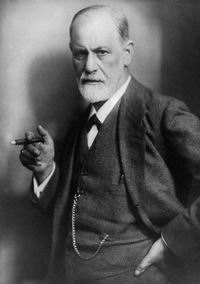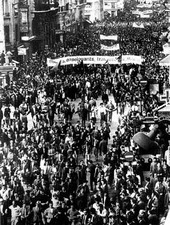Seeds of Fire: A People’s Chronology
Recalling events that happened on this day in history.
Memories of struggle, resistance and persistence.
Compiled by Ulli Diemer
|
May 6, 1856
|

|
|
Birth of Sigmund Freud (1856-1939), the founder of psychoanalysis.
|
|
May 6, 8, 1911
|
|
Rosa Luxemburg publishes her critique of “Peace Utopias”, by which she means schemes to bring about peace through international treaties. She characterizes them as “utopian” because they leave the underlying causes of militarism – capitalism and imperialism – in place.
She writes: “The friends of peace in bourgeois circles believe that world peace and disarmament can be realised within the frame-work of the present social order, whereas we ... are convinced that militarism can only be abolished from the world with the destruction of the capitalist class state.”
She adds: “It is typical of Utopian strivings that, in order to demonstrate their practicability, they hatch “practical ” recipes with the greatest possible details.”
Luxemburg points to blinkered viewpoint of those who believe that the era of peace has already arrived because “for forty years we have had uninterrupted peace”. She says “This conception, which considers only events on the European continent, does not notice that the very reason why we have had no war in Europe for decades is the fact that international antagonisms have grown infinitely beyond the narrow confines of the European continent, and that European problems and interests are now fought out on the world seas and in the by-corners of Europe.... Every time that bourgeois politicians have championed the idea of Europeanism, of the union of European States, it has been with an open or concealed point directed against the “yellow peril,” the “dark continent,” against the “inferior races,” in short, it has always been an imperialist abortion.”
She warns that without the overthrow of capitalism, war is inevitable. A little more than three years later, she will be proven tragically correct.
|
|
May 6, 1968
|

|
|
In Paris, intensifying student protests reach a new level as the national student union and the union of university professors jointly call a march to protest against the police invasion and occupation of Sorbonne University. More than 20,000 people gather to march toward the Sorbonne, which is still sealed off by police. As they approach the vicinity of the university, police charge them with batons flailing, striking anyone they can reach. The march breaks apart, but soon people are starting to build barricades, while others throw paving stones at the police, forcing them to retreat for a time. Police regroup, start firing tear gas, and attack the crowd again. Hundreds of students and supporters are arrested. By the next day, growing numbers of workers and high school students have joined the original protesters in the streets. The mood is increasingly insurrectionary.
|

